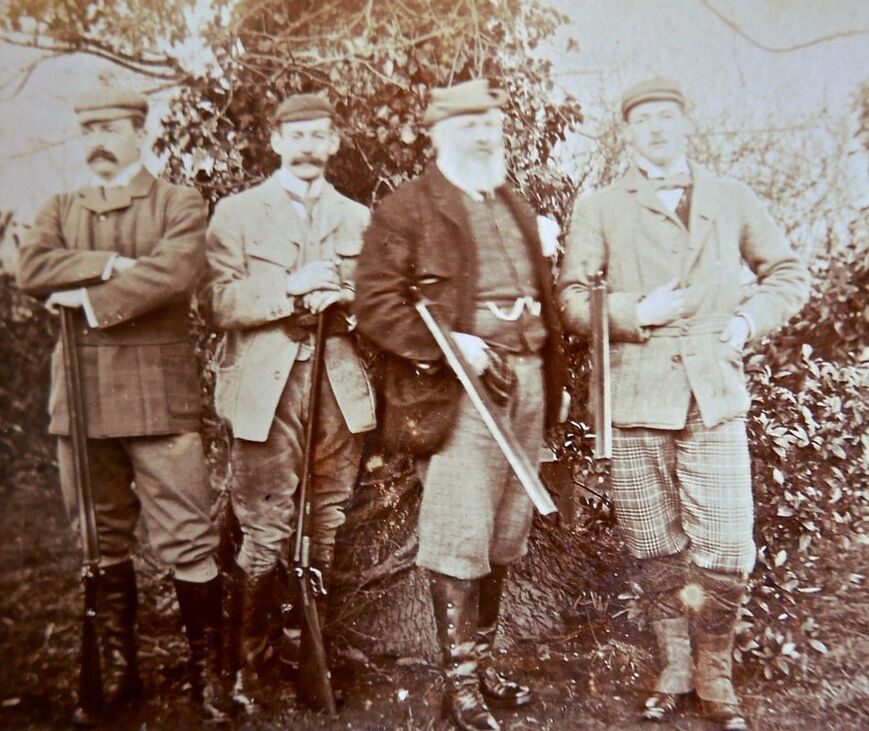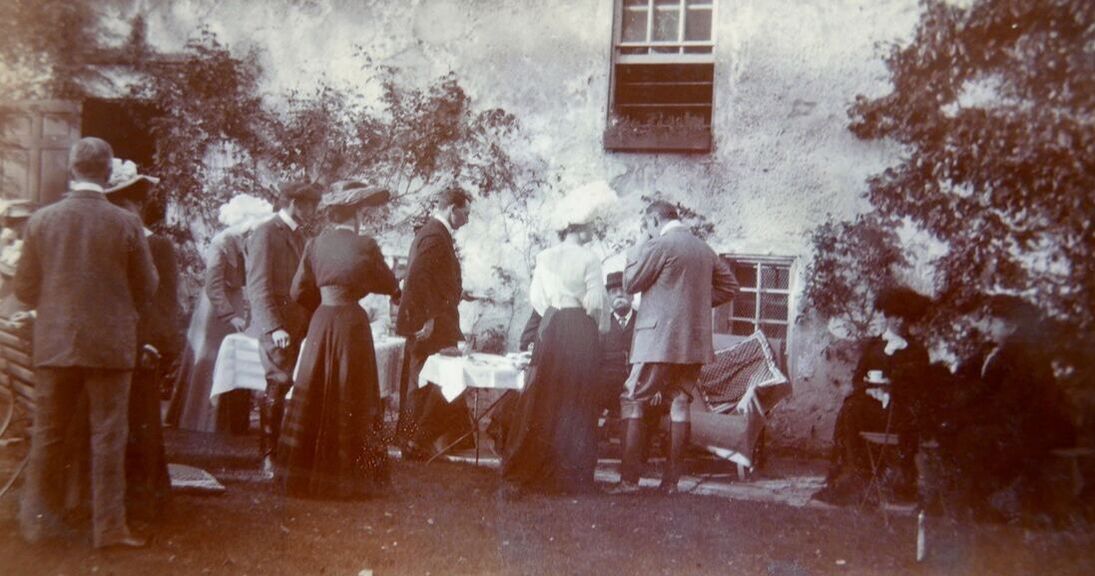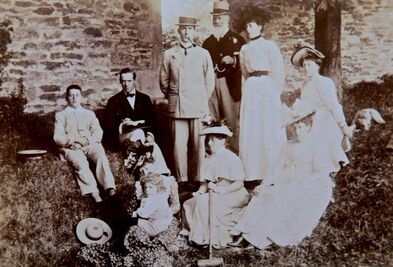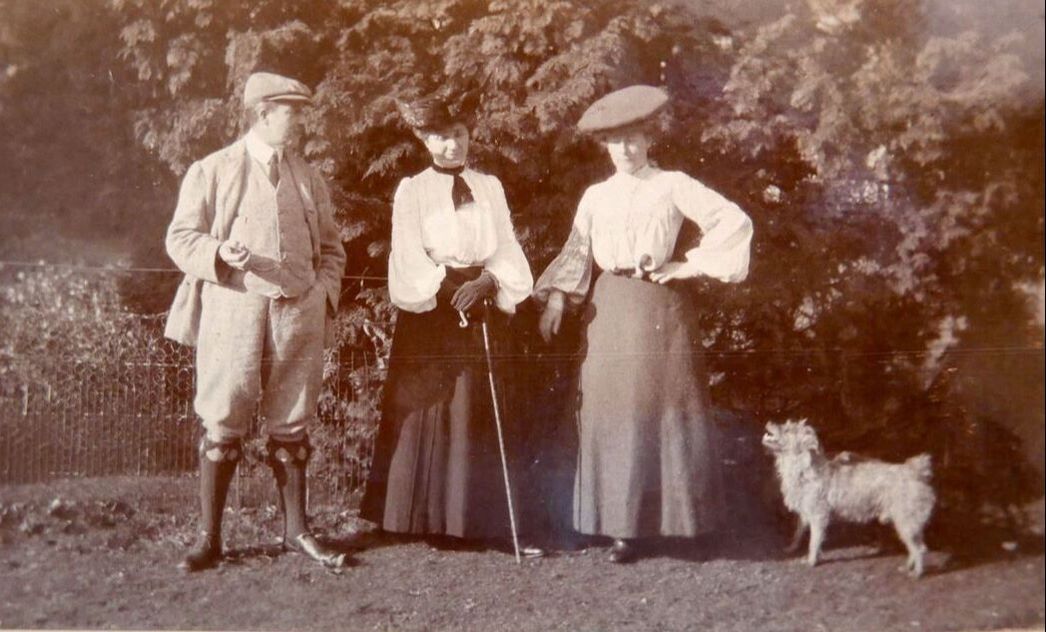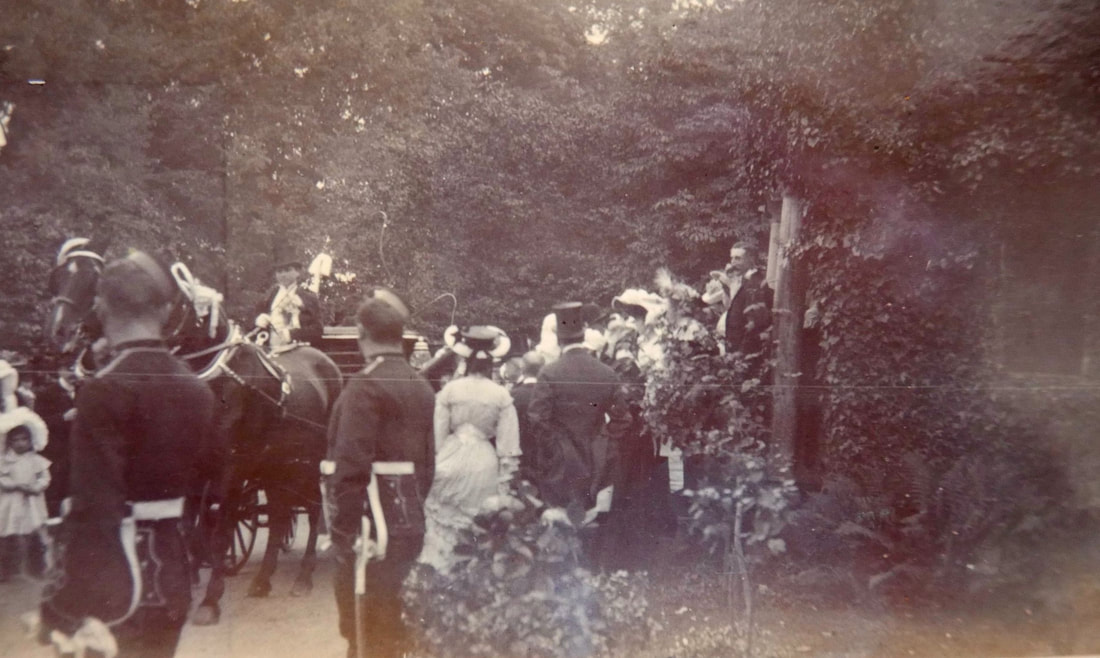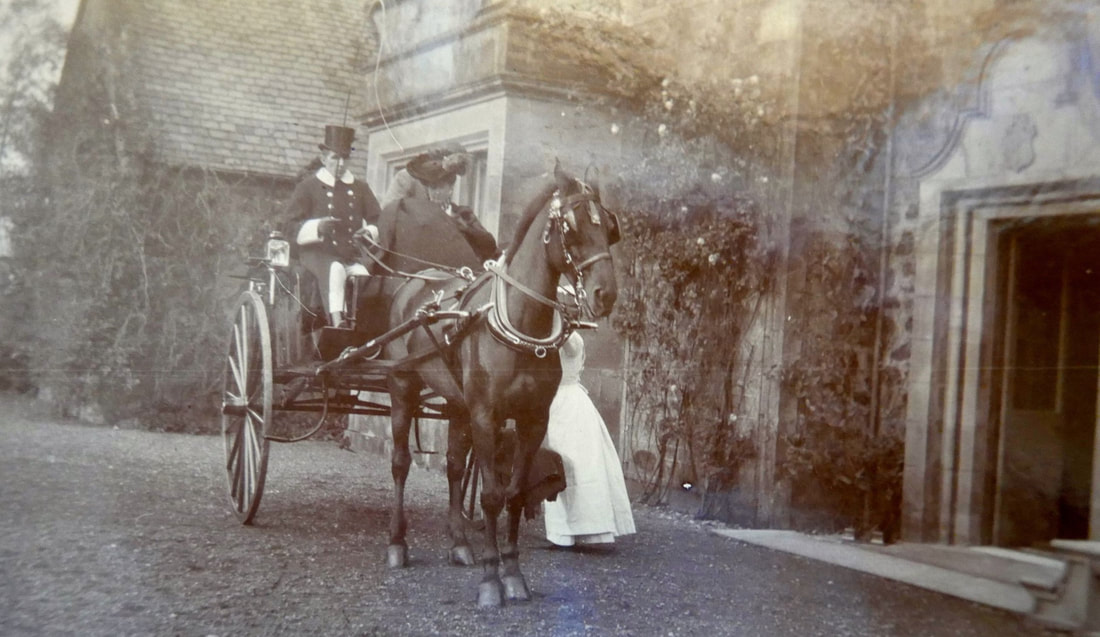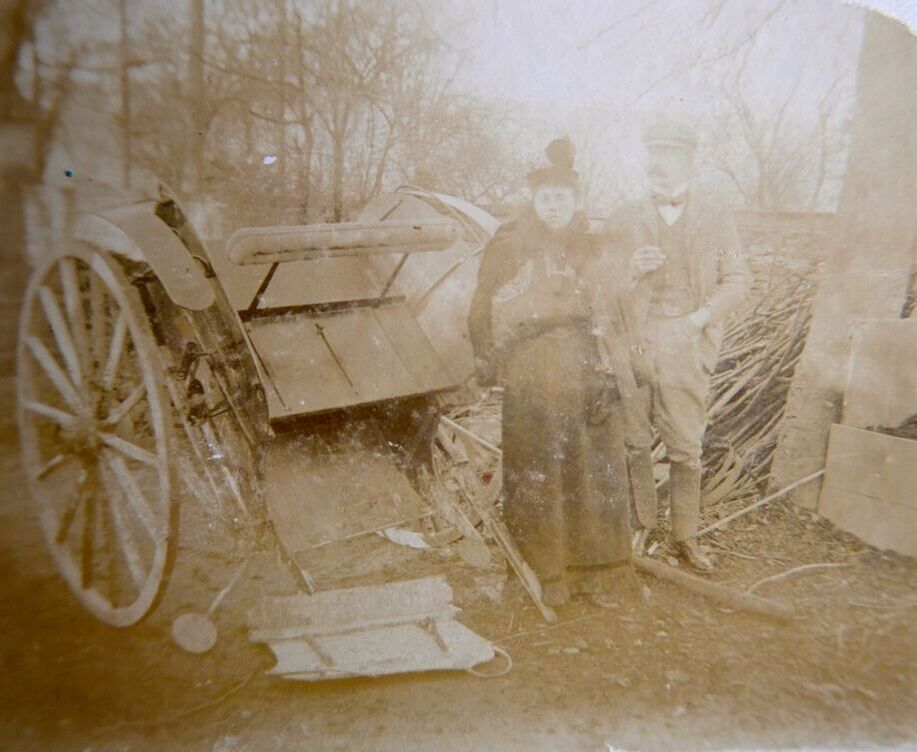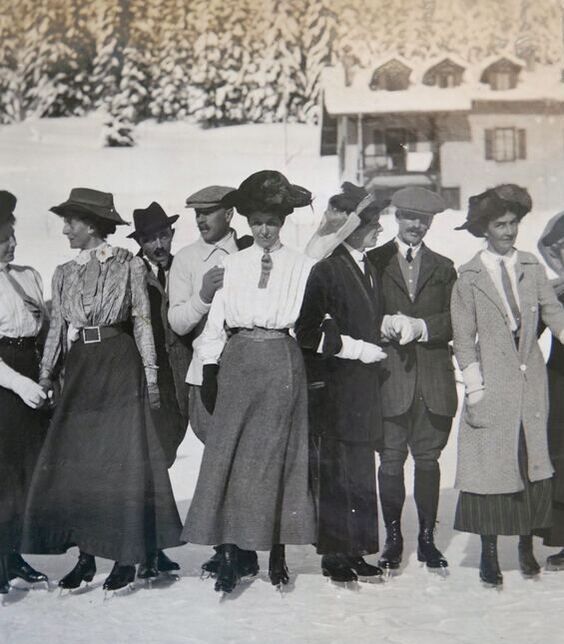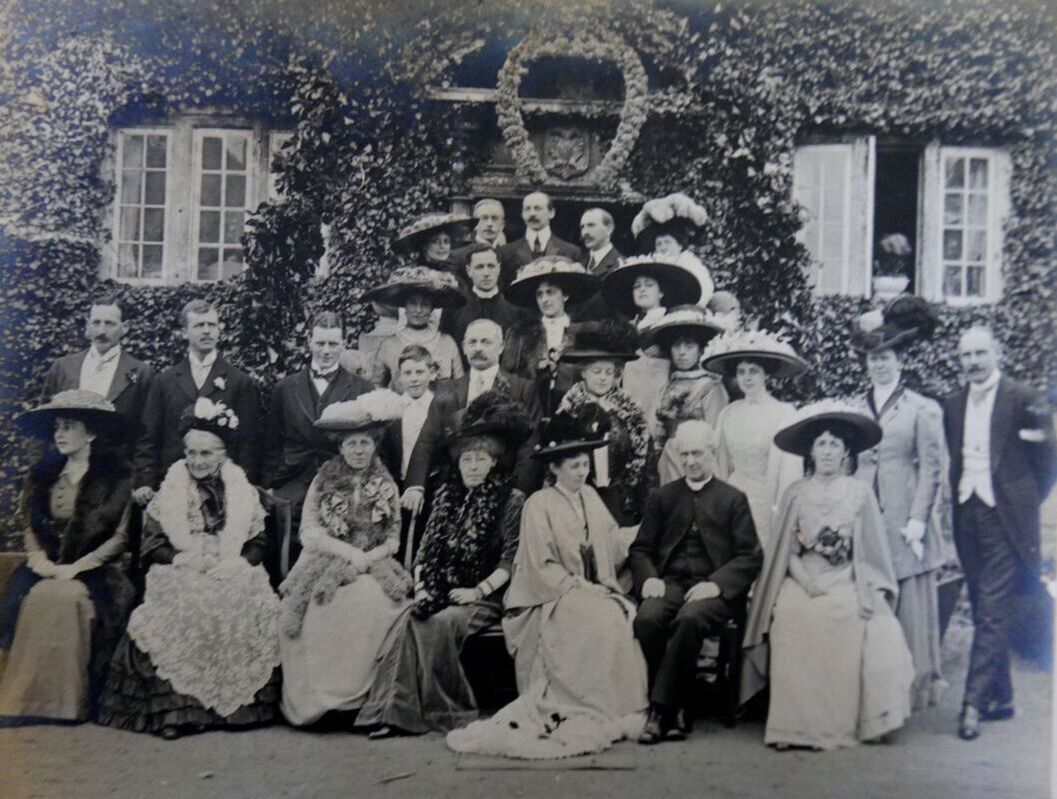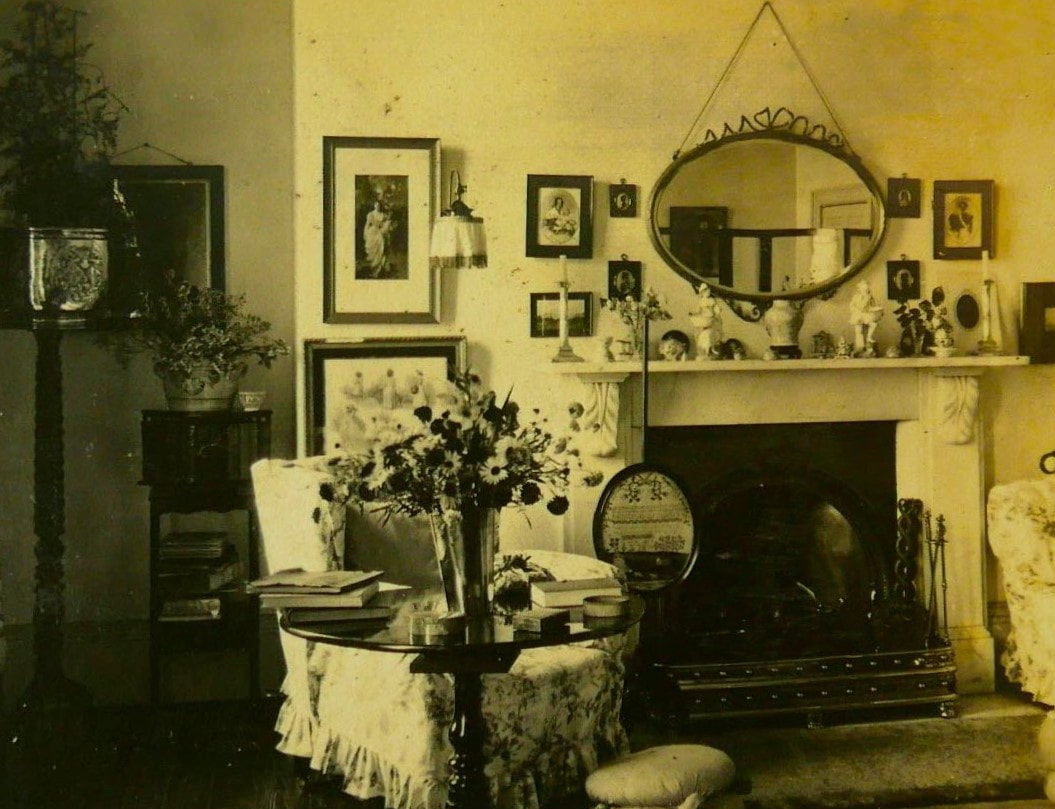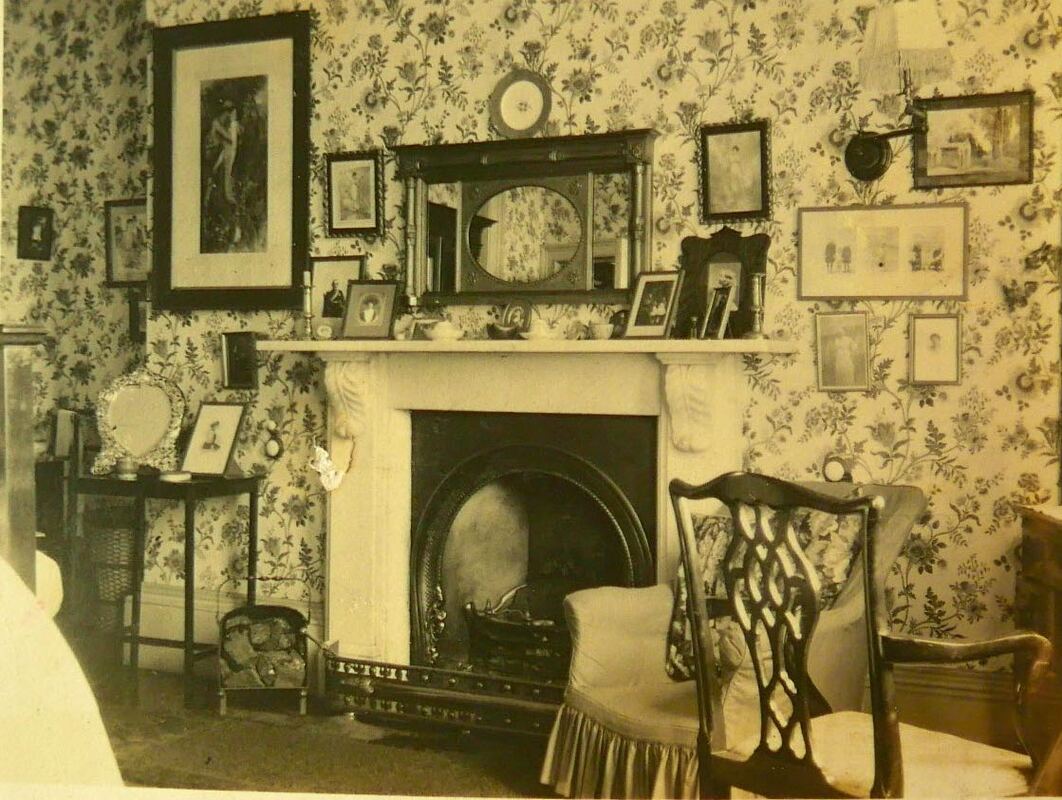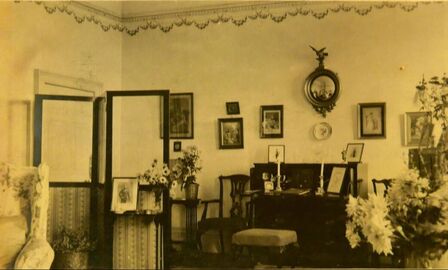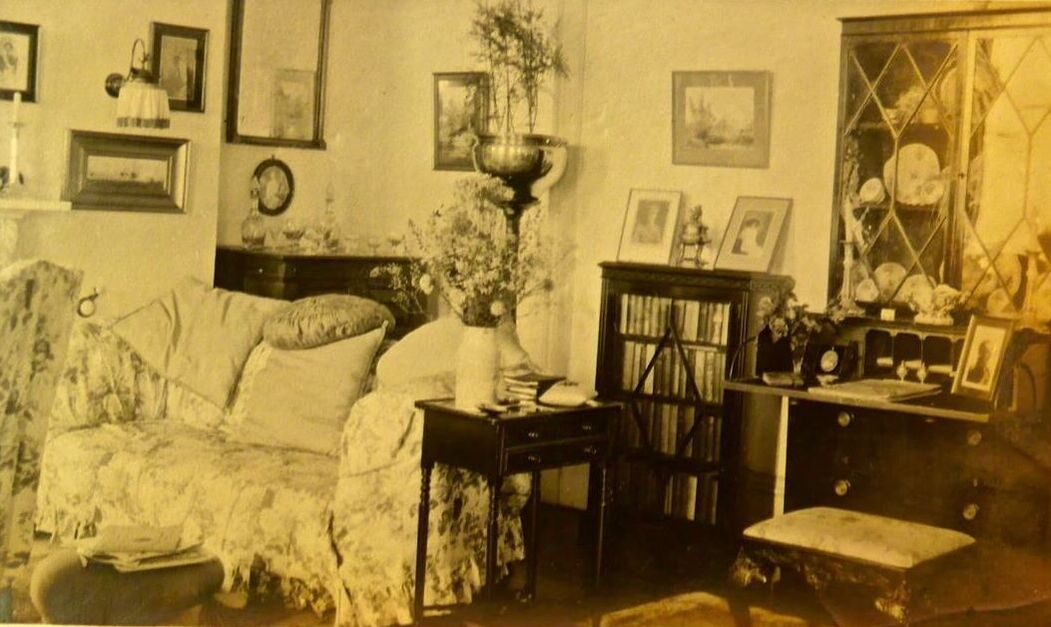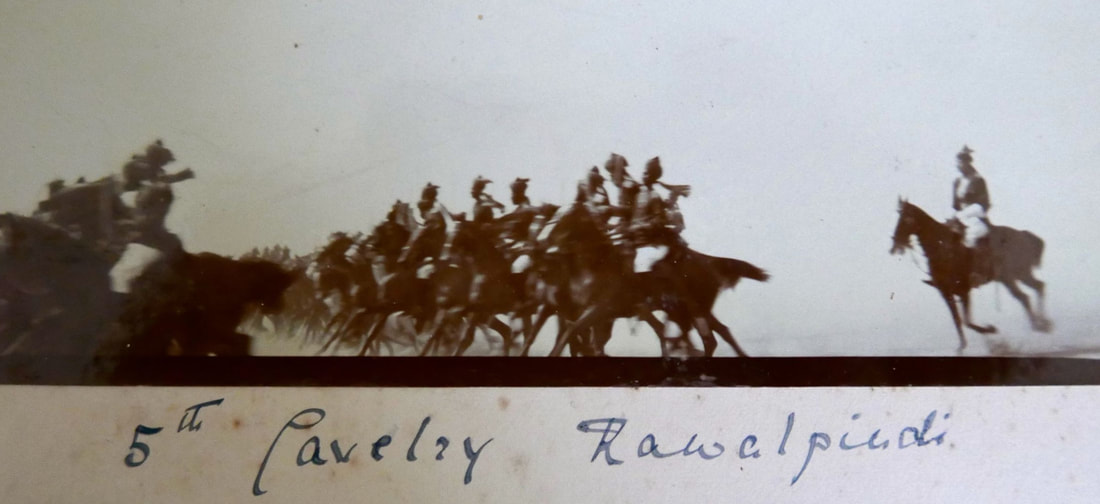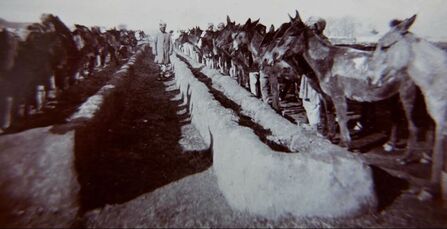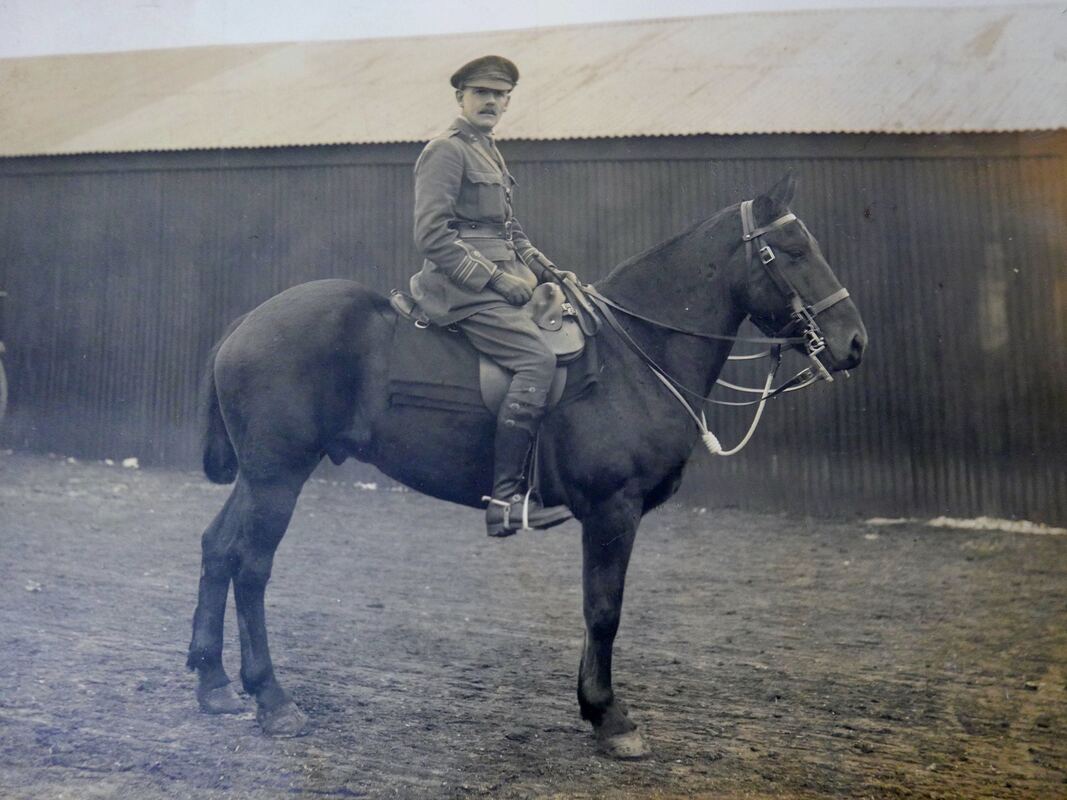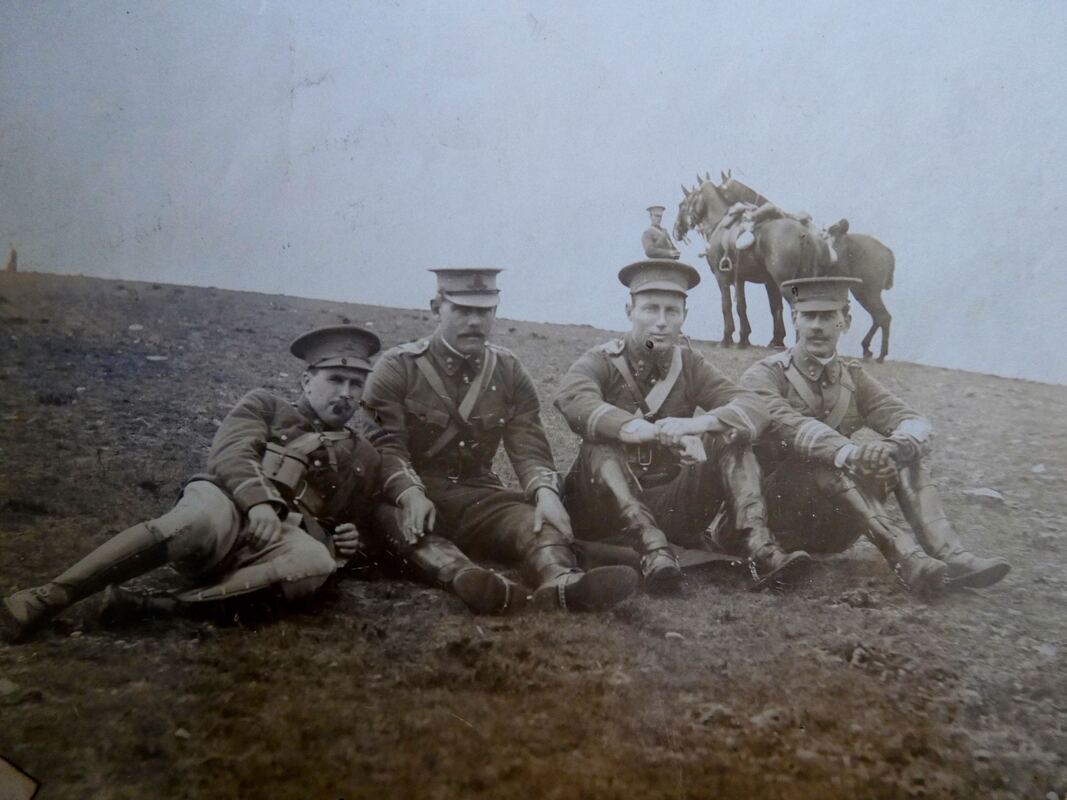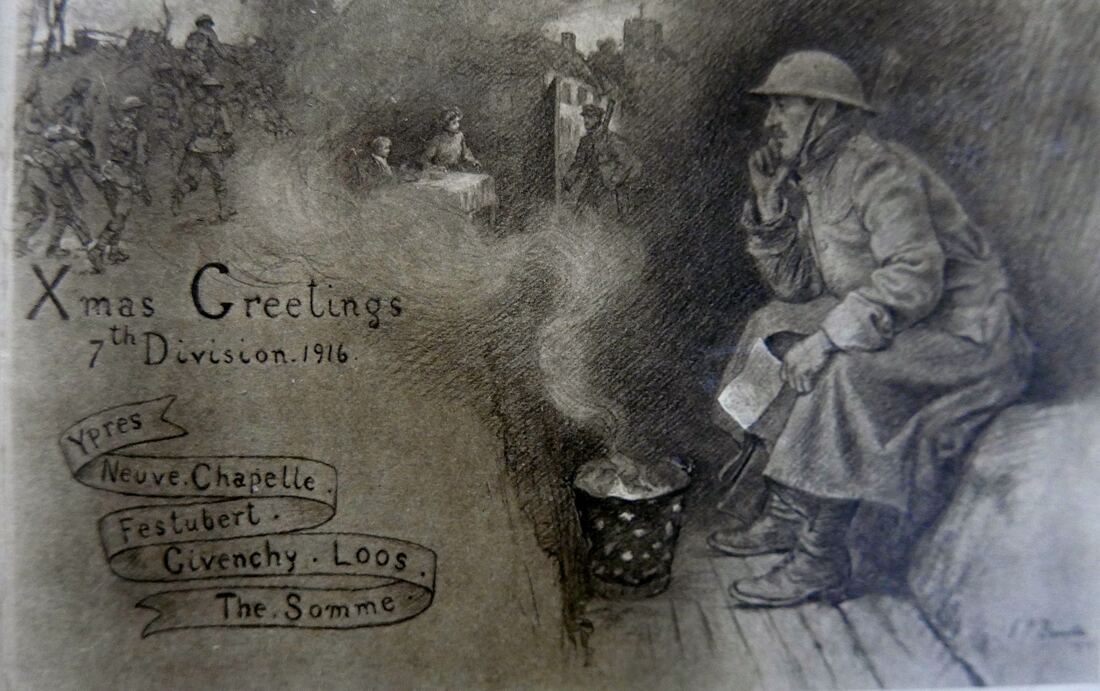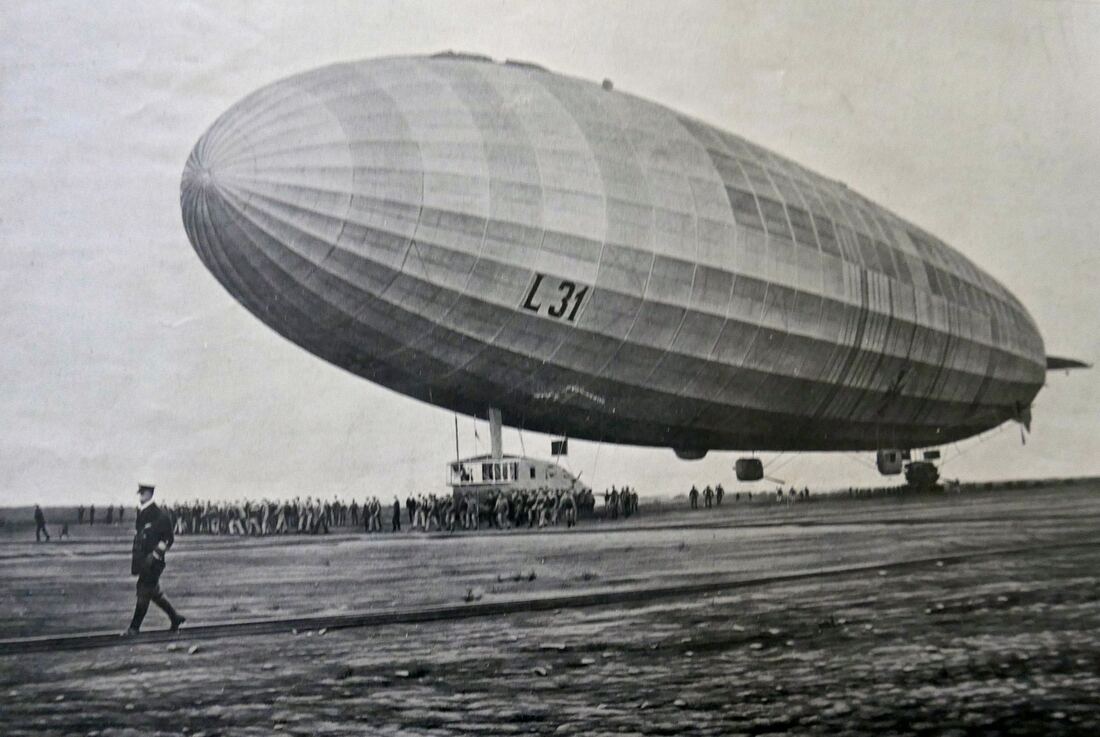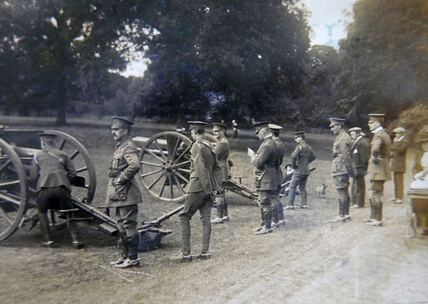The World of the Northeys Alan Payne November 2019
It is easy to characterise the Northey family – privileged, wealthy and aloof from many of their fellow residents. Compared to most Box residents of the time, they were advantaged beyond expectations but that isn't the whole story. In the years between 1880 and 1945 they lost most of their money, their status in Box and the society they knew had completely disappeared.
Through the Northey photograph albums we see the changes in their society from High Victorian affluence to the tragedy of futile deaths on the anonymous battlefields of twentieth-century war.
Entertaining as a Way of Life
Despite the number of children and dependants, the Northeys were unrestrained socialisers. They entertained relatives, distant relations and family friends at the whim of family members without limit. The children of George Wilbraham Northey all regarded Ashley Manor as their family base and gathered there at regular holiday times such as the extended Christmas period.
As a child, the novelist PG Wodehouse lived with the Northey family at their other great property, Cheney Court, during his holidays in the 1920s and brought with him, his nurse and family friends. It is alleged that his Jeeves and Wooster novels reflect the households he remembered living there in his childhood, which included his aunt Mary Deane.
Through the Northey photograph albums we see the changes in their society from High Victorian affluence to the tragedy of futile deaths on the anonymous battlefields of twentieth-century war.
Entertaining as a Way of Life
Despite the number of children and dependants, the Northeys were unrestrained socialisers. They entertained relatives, distant relations and family friends at the whim of family members without limit. The children of George Wilbraham Northey all regarded Ashley Manor as their family base and gathered there at regular holiday times such as the extended Christmas period.
As a child, the novelist PG Wodehouse lived with the Northey family at their other great property, Cheney Court, during his holidays in the 1920s and brought with him, his nurse and family friends. It is alleged that his Jeeves and Wooster novels reflect the households he remembered living there in his childhood, which included his aunt Mary Deane.
Itinerant Lifestyle
Social gatherings were extremely costly in terms of provisioning and staffing the houses and also in terms of time spent inviting guests and accommodating visitors, their servants and luggage. In the photographs below we get glimpses of the travel arrangements needed to entertain visitors around the turn of the 1900s and into the 1920s. Every time they moved from one home to another, there was the usual need for saying goodbye to the staff, organising travel arrangements and provisions in the new house as well as the social calendar appropriate to the new location.
Social gatherings were extremely costly in terms of provisioning and staffing the houses and also in terms of time spent inviting guests and accommodating visitors, their servants and luggage. In the photographs below we get glimpses of the travel arrangements needed to entertain visitors around the turn of the 1900s and into the 1920s. Every time they moved from one home to another, there was the usual need for saying goodbye to the staff, organising travel arrangements and provisions in the new house as well as the social calendar appropriate to the new location.
Funding the Cost of their Lifestyle
At the same time as the high cost of keeping open house the income needed to support this was under severe pressure. The collapse in Farming Income after 1880 meant that the Northey income from the Home Farms and rents received from tenants were seriously declining.
At the same time as the high cost of keeping open house the income needed to support this was under severe pressure. The collapse in Farming Income after 1880 meant that the Northey income from the Home Farms and rents received from tenants were seriously declining.
|
In a world of manual labour on farms there was a limit to the amount of rental income that could be extracted from tenant farms, such as that seen left in December 1894.
Lack of investment into properties was a short-term cause of decline in rental income and, when they tried to sell premises, a reduction in property values. As we say nowadays, it was a perfect storm. To fund their lifestyle, the family started with one-off, speculative sales of land, then the lease of rights to extract mineral and stone deposits from their property. When this was insufficient, they turned to the piecemeal sale of individual plots of land for the building of houses which now make up the homes in Box. |
|
There are few photos of what we might call holiday snaps in the family’s albums. The implication appears to be that the family had lifestyles of duty and service (at least by the heads of the family), rather than a lavish one involving continuous holidays and pleasure. One of the reasons for this was the extent of their personal properties at Woodcote House, Epsom, and at times in Bath. In additional they held properties in Box, and needed visits to London (at times for pleasure and others for their role as Members of Parliament). This meant that the family was constantly moving and spending. It was only George Wilbraham Northey who settled in the Box properties, leaving his brother, Rev Edward William, in Epsom. It is also true that many of the photographs covered periods of warfare and economic depression in the world in the 1910s to 1930s. It wasn't frivolous amusements that fascinated the Northey men but their involvement in military and administrative functions. |
|
Marriages and Children The cost of maintaining large families, together with servants, relatives and friends was colossal. It lasted throughout many generations of the family. For example, George Wilbraham had thirteen children (six girls and seven boys) needing seven servants to keep the household running at Ashley Manor in 1901. As many parents know, the number of babies is only the start of the costs, quickly followed by birthdays, twenty-firsts, engagements, marriages, grandchildren and setting up future generations. None of this is a new phenomenon and all leaked money out of the family’s control. |
Houses
These amazing photos of Northey households show everything we know about Victorian homes: fussy, every room filled with wall pictures, mirrors and furniture adorned with frilly covers.
These amazing photos of Northey households show everything we know about Victorian homes: fussy, every room filled with wall pictures, mirrors and furniture adorned with frilly covers.
They show a middle class house without grand Georgian affluence, gathered around the fireplace for warmth and every wall and surface covered with memorabilia.
Changing Wars
It is obvious that the Northey family principles were based on the merits of military service. They rose in importance because of their ability to command men in peace and wartime and to exhibit qualities of loyalty and duty. These virtues were also partly their downfall.
It is obvious that the Northey family principles were based on the merits of military service. They rose in importance because of their ability to command men in peace and wartime and to exhibit qualities of loyalty and duty. These virtues were also partly their downfall.
The family photo albums show the transition from horse-drawn cavalry to tanks and machine-dominated battlefields. The start of their lordship in Box was dominated by horse travel and transport. That remained true until the very end of their tenure when warfare became a technical battlefield, not best suited to their natural ability. They were the inheritors of the Waterloo generation from the late Georgian period.
|
The sad death of Anson Northey is an indication of how far the world had changed by 1914. His demise was inglorious to an extreme, sunk in a quagmire of mud at Longsart, north-west France, body never recovered, with no burial of the body and no closure for his parents.
George Edward waited in vain for news that Anson might have been wounded or even captured but no such report ever arrived and it was 1916 by the time that he was declared to have been killed. The First World War was a great leveller of all ranks of society. |
New World Emerging
The attempt by British governments to restore society in Britain to pre-war Edwardian standards failed dismally. The world had irreversibly altered. The Northeys could not swim against the tide of social change but they continued to believe that military duties were the route to power and influence. Three of George Wilbraham's sons went into military careers and four of the daughters married serving officers. The society they lived in remained fixed into Victorian and Edwardian values.
The attempt by British governments to restore society in Britain to pre-war Edwardian standards failed dismally. The world had irreversibly altered. The Northeys could not swim against the tide of social change but they continued to believe that military duties were the route to power and influence. Three of George Wilbraham's sons went into military careers and four of the daughters married serving officers. The society they lived in remained fixed into Victorian and Edwardian values.
